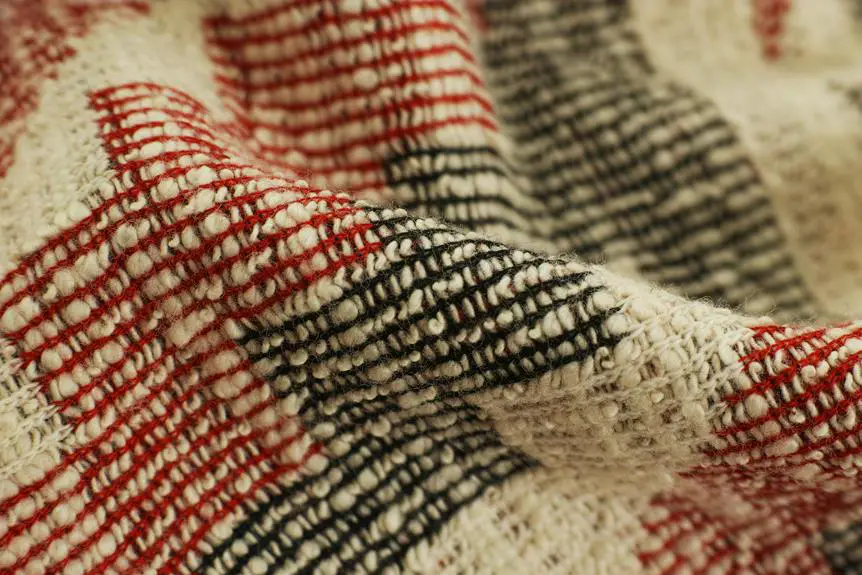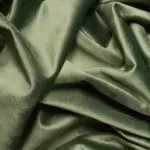When you think about fabric choices, seersucker and cotton often come to mind, but do you really know what sets them apart? Seersucker's distinctive puckered texture creates a breathable option perfect for hot days, while cotton boasts versatility and softness for everyday use. Each has its own history and characteristics that cater to different needs, but the choice between them can influence your comfort and style significantly. So, which one really suits your lifestyle best? The answer might surprise you as you explore the unique qualities each fabric brings to the table.
Table of Contents
History of Seersucker
Seersucker, a lightweight fabric known for its crinkled texture, has roots that trace back to ancient India, where it was originally crafted for hot climates. This unique fabric gained popularity due to its ability to keep the wearer cool and comfortable, making it ideal for tropical weather. The name 'seersucker' comes from the Persian words 'shir o shakar,' which mean 'milk and sugar,' reflecting the fabric's contrasting smooth and textured stripes.
As you explore the history of seersucker, you'll find that it made its way to the Western world in the 18th century, primarily through British colonial trade. By the mid-19th century, American manufacturers began producing seersucker, often using cotton as the primary fiber. This fabric quickly became a favorite in southern states, where its breathability and charm suited the warm climate.
You can appreciate how seersucker evolved over time, transitioning from workwear to a symbol of casual elegance. Today, it remains a staple in summer fashion, whether in the form of suits, dresses, or casual wear. Understanding this rich history helps you appreciate the fabric's enduring appeal in contemporary style.
History of Cotton
Cotton has been cultivated for thousands of years, with its earliest use dating back to ancient civilizations in India and Peru. You'll find evidence of cotton textiles in archaeological sites, showcasing its significance in trade and daily life. By around 3000 BC, the Indus Valley civilization was already spinning cotton, indicating its early adoption.
As you explore history, you'll notice that cotton spread through Asia, reaching China and the Middle East. The fabric became a staple in various cultures, prized for its softness and versatility. By the Middle Ages, cotton was introduced to Europe, where it gained popularity among the wealthy.
The Industrial Revolution in the 18th century marked a turning point for cotton production. Innovations like the spinning jenny and the power loom revolutionized how cotton was processed and made it widely accessible. This period not only transformed the textile industry but also had profound social and economic implications, including the rise of the cotton economy in the American South.
Today, cotton remains a global commodity, integral to fashion and everyday life. Understanding its rich history helps you appreciate its role in shaping textile production and cultural exchange throughout the ages.
Characteristics of Seersucker
Characterized by its unique puckered texture, seersucker fabric offers a lightweight and breathable option that's perfect for warm weather. This distinctive texture not only gives seersucker its signature look but also helps keep you cool by allowing air to circulate freely around your body. You'll find that seersucker is typically made from cotton, which enhances its comfort and softness against the skin.
One of the key benefits of seersucker is its low maintenance. It's wrinkle-resistant, meaning you won't have to spend much time ironing. Additionally, its durability makes it suitable for various activities, whether you're heading to a casual outing or a more formal event.
| Characteristic | Description |
|---|---|
| Texture | Unique puckered design |
| Breathability | Allows air circulation |
| Maintenance | Wrinkle-resistant |
| Fabric Composition | Usually 100% cotton |
| Versatility | Suitable for casual and formal wear |
Characteristics of Cotton
When you think about cotton, breathability and comfort immediately come to mind.
This fabric not only feels great against your skin but also stands out for its durability and easy maintenance.
Let's explore how these characteristics make cotton a popular choice for everyday wear.
Breathability and Comfort
Breathable and soft, cotton fabric keeps you comfortable in various temperatures, making it a popular choice for everyday wear. Whether it's a hot summer day or a cool evening, cotton helps regulate your body temperature, allowing for airflow that prevents overheating. You'll notice how it feels light against your skin, reducing that sticky feeling common with synthetic fabrics.
One of the key reasons you might reach for cotton is its moisture-absorbing properties. It wicks away sweat, keeping you dry and comfortable throughout the day. This is particularly beneficial during physical activities or when you're outdoors. Plus, cotton's natural fibers are gentle, making it ideal for those with sensitive skin.
Another advantage you'll appreciate is its versatility. You can find cotton in various styles, from casual tees to more formal dress shirts, ensuring you look stylish while feeling your best. Additionally, cotton's softness enhances your overall comfort, allowing you to move freely without restrictions.
Durability and Maintenance
Cotton is known for its impressive durability, making it a reliable choice for everyday wear that can withstand regular use and washing. You'll find that cotton fabric holds up well over time, resisting wear and tear better than many other materials. When you choose cotton, you're investing in a fabric that can endure the rigors of daily life without losing its shape or comfort.
Caring for cotton is relatively easy. You can toss it in the washing machine, and it typically stands up to both hot and cold water, though cold is often gentler. It's best to avoid bleach, as it can weaken the fibers and affect the color. When you dry cotton, you have the option of air drying or using a dryer. If you opt for the dryer, a medium heat setting works well to prevent shrinkage.
Ironing cotton is straightforward, too. It responds well to heat, so you can achieve that crisp, clean look easily. Overall, cotton combines durability with low maintenance, making it a smart choice for anyone seeking long-lasting, easy-care clothing.
Best Uses for Seersucker
When it comes to warm weather attire, seersucker's lightweight fabric keeps you cool and comfortable.
It's perfect for casual events and gatherings, adding a touch of style without being too formal.
Plus, if you're heading on vacation, seersucker makes for great resort wear that's both chic and laid-back.
Warm Weather Attire
Seersucker is perfect for warm weather events, offering a stylish yet comfortable option for casual gatherings or outdoor parties. Its lightweight fabric and unique puckered texture allow for better airflow, which means you'll stay cool while looking sharp.
When it comes to selecting the best uses for seersucker in your warm weather wardrobe, consider these occasions:
- Picnics: Its casual vibe makes it an excellent choice for laid-back outdoor meals.
- Beach Days: Seersucker is easy to throw on over your swimsuit for a stylish beach cover-up.
- Garden Parties: The fabric's breathability ensures you're comfortable while mingling in the sun.
With its versatility and charm, seersucker lets you enjoy your warm weather events without sacrificing style. Embrace this fabric in your wardrobe, and you'll find yourself effortlessly prepared for any occasion that calls for cool, casual elegance.
Casual Events and Gatherings
For casual events and gatherings, seersucker stands out as a go-to fabric that combines comfort with effortless style. Whether you're attending a backyard barbecue, a summer wedding, or a casual brunch, seersucker's light and breathable nature keeps you cool and stylish.
You can easily opt for a seersucker blazer paired with chinos for a smart-casual look that's perfect for outdoor events. Alternatively, a seersucker shirt worn with shorts creates a laid-back vibe that's ideal for relaxed gatherings. The unique texture and pattern of seersucker add a touch of personality to your outfit, making it suitable for both formal and informal occasions.
If you're invited to a picnic or garden party, a seersucker dress or jumpsuit can be a fantastic choice. It's comfortable enough to enjoy the festivities while still looking put together. Plus, you won't have to worry about wrinkling, as seersucker naturally resists creasing.
Vacation and Resort Wear
Nothing says vacation style quite like a lightweight seersucker outfit that effortlessly combines comfort and flair for resort wear. Whether you're lounging by the pool or strolling through a seaside market, seersucker keeps you cool and stylish. Its unique texture not only adds visual interest but also allows for excellent airflow, making it a perfect choice for warm climates.
When planning your resort wardrobe, consider these best uses for seersucker:
- Beach Cover-Ups: Slip on a seersucker dress or shirt over your swimsuit for a chic transition from beach to bar.
- Casual Dinner Attire: Pair seersucker shorts with a crisp white shirt for a polished yet relaxed dinner look.
- Family Outings: Opt for seersucker pants or skirts that provide both comfort and style for family adventures.
With its playful patterns and breathable fabric, seersucker is a go-to choice for any vacation wardrobe. Embrace the effortless elegance it brings to your resort wear collection!
Best Uses for Cotton
Cotton's versatility makes it an ideal choice for everyday clothing, bedding, and various home textiles. You can wear cotton T-shirts and jeans for casual outings, as they provide comfort and breathability. Whether you're running errands or relaxing at home, cotton's soft texture ensures you feel good all day.
In bedding, cotton sheets are a popular choice due to their ability to regulate temperature and wick moisture. You'll appreciate how they keep you cool in the summer and warm in the winter. Plus, cotton's durability means your sheets can withstand frequent washing without losing their quality.
When it comes to home textiles, cotton's practicality shines. You can use cotton fabric for curtains, tablecloths, and towels, all of which benefit from its absorbency and ease of care. If you enjoy crafting, cotton's wide variety of prints and weights allows you to create anything from quilts to throw pillows.
Frequently Asked Questions
Can Seersucker Be Used for Winter Clothing?
You might find seersucker too lightweight for winter clothing. It's typically used in warmer months due to its breathable fabric. Instead, consider heavier materials that provide better insulation and warmth during colder weather.
Is Cotton Hypoallergenic Compared to Seersucker?
Cotton's generally more hypoallergenic than seersucker, making it a better choice if you're sensitive to allergens. It's soft and breathable, so you'll enjoy comfort without irritation, especially if you have skin sensitivities.
How Do I Care for Seersucker Garments?
To care for seersucker garments, machine wash in cold water with a gentle cycle. Avoid bleach, and tumble dry on low. Iron on a low setting if needed, but let the fabric's natural texture shine.
Can I Dye Cotton Fabric Easily?
Yes, you can dye cotton fabric easily! Just choose a fabric dye, follow the instructions, and ensure your cotton is clean. You'll achieve vibrant colors with some patience and the right technique. Enjoy your dyeing project!
What Are the Environmental Impacts of Seersucker Production?
When considering seersucker production, you'll find environmental impacts like water usage, pesticide application, and energy consumption during manufacturing. It's essential to weigh these factors against sustainability practices in the textile industry to make informed choices.
- What Is the Difference Between a Nonwoven and a Knitted Fabric? - July 11, 2025
- What Are the Different Types of Nonwoven Fabrics? - July 11, 2025
- Exploring the World of Nonwoven Materials and Their Properties - July 11, 2025







